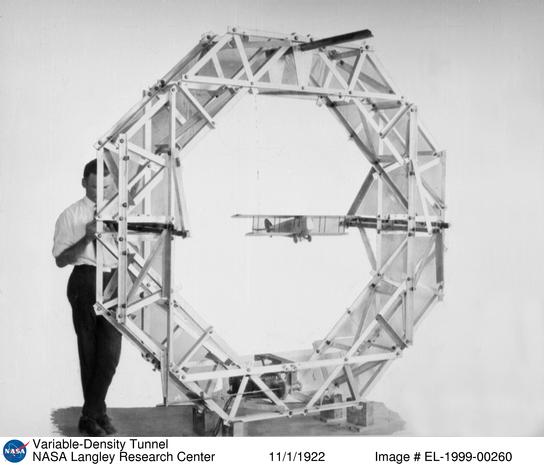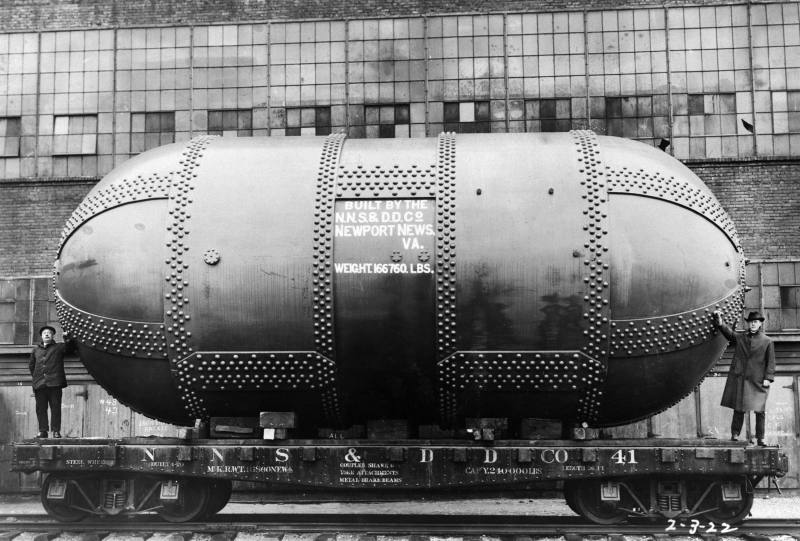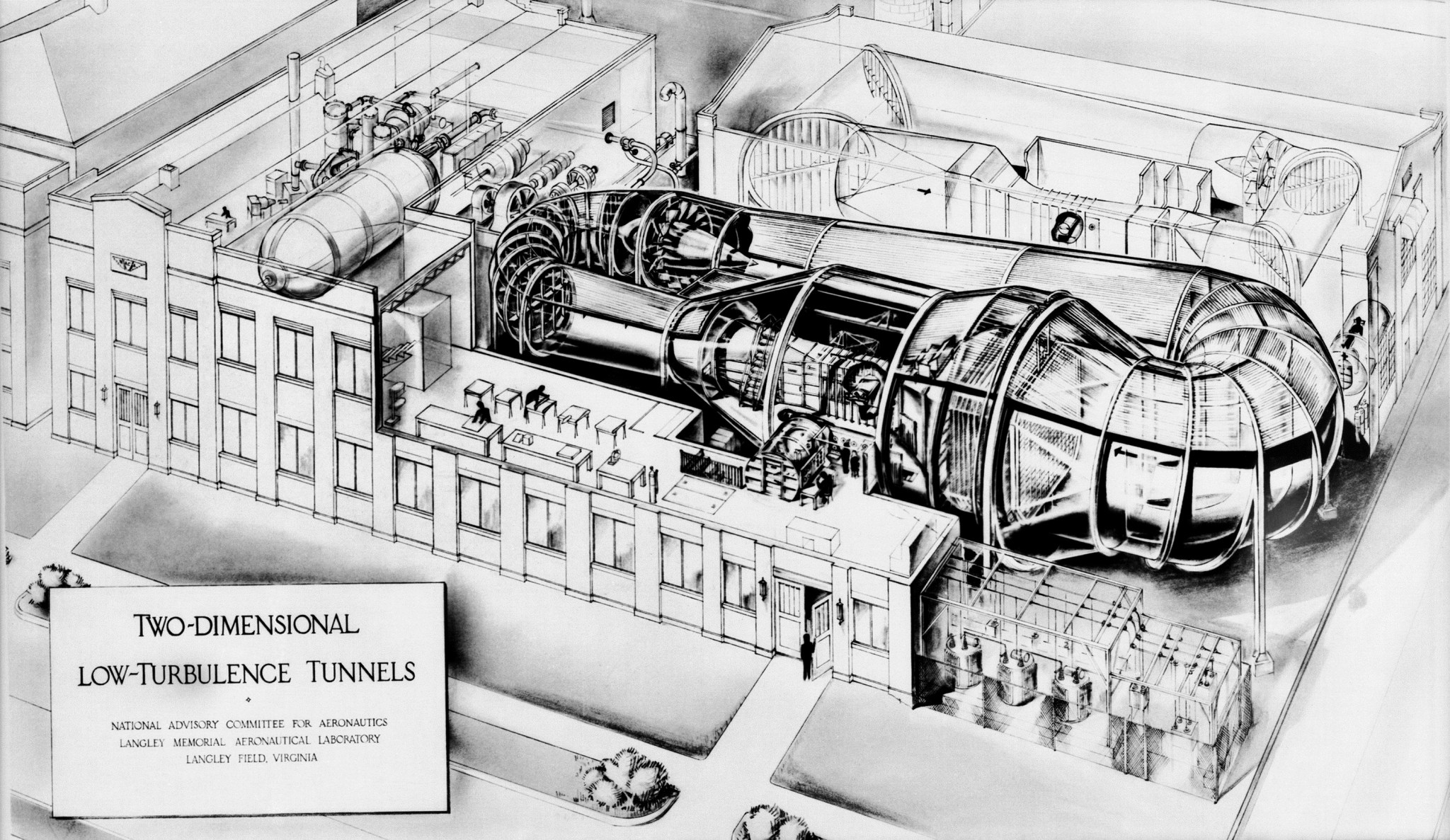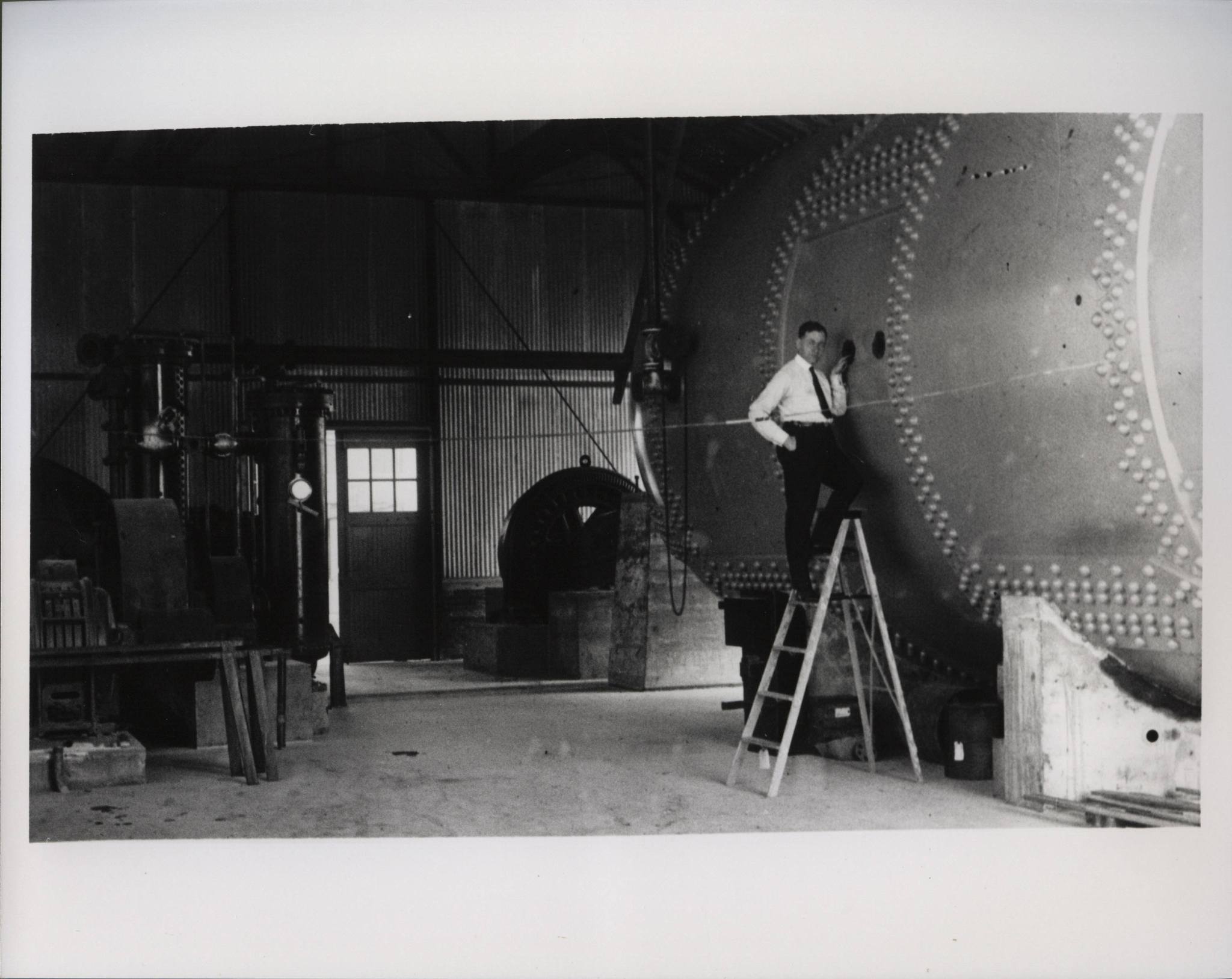Quick Facts
Year Built: 1921
Historic Eligibility: National Register Eligible (B582); National Historic Landmark (Variable Density Tunnel)
Important Tests: Revolutionary airfoil design and performance tests establishing NACA as a world leader in aeronautical research
History
The Variable Density Tunnel, identified as Langley’s “Tunnel #2,” played a major role in U.S. aircraft development in the first half of the century, and was an important tool in the revolution of aircraft design between 1923 and the outbreak of World War II.
The VDT was conceived by Dr. Max Munk, an early technical employee of NASA’s predecessor, the National Advisory Committee for Aeronautics. The objective of the VDT was to achieve more accurate and reliable results from wind tunnel tests on models. Improved results would be achieved by conducting wind tunnel tests at higher air pressure than the ambient air pressure in which scaled down test articles had been tested in other wind tunnels until that time.
In Munk’s 1921 proposal entitled, “On a New Type of Wind Tunnel,” he wrote, “Air may be used; but, if it is compressed, it becomes a fluid with new properties, a fluid which is the best suited for reliable and exact tests on models. When air is compressed, its density increases, but its viscosity does not. The increased pressure, it is true, requires strong walls for the tunnel to withstand the pressure and to prevent the air from expanding; but the increase of effectiveness secured for the tests is so great that it will pay to make the necessary changes and to replace the light walls of existing tunnels by heavy steel ones.”
Two years after Munk’s proposal, this revolutionary piece of experimental test equipment went into operation. The pressure vessel of the VDT was fabricated in Virginia at the Newport News Shipbuilding and Dry Dock Company in 1921. When work on it was completed in February 1922, it was transported to NACA Langley by barge, arriving in June of 1922 for installation in Building 60A (later designated as Building 582). The pressure tank, which measured34.5 feet long by 15 feet in diameter, was made of boiler plate steel – more than two inches thick – and weighed 85 tons.

The VDT yielded test results so superior to those obtained by any previous wind tunnel, especially regarding airfoil design and performance, that the NACA became the acknowledged world leader in aeronautical research.
Partially destroyed by fire in 1927, the VDT was rebuilt and operational again by 1930. By the 1940’s, the tunnel had become obsolete and was gutted. It was then used as a pressure tank to support the operation of the Vertical Spin Tunnel and the Low Turbulence Pressure Tunnel. The VDT continued to serve in this capacity until it was declared unsafe for further operation in 1978.
As part of the “Man in Space” theme study that was performed by the National Park Service in 1984, the VDT was declared a National Historic Landmark in 1985 for its contributions to the development of flight.
In 1989, the VDT pressure vessel was removed from Building 582, relocated to the West Area of NASA Langley, and placed on display adjacent to the Reid Conference Center (Building 1222). A dedication ceremony was held in 1991 by NASA and the National Park Service.
Building 582 continued to be used as office space through the 1990s and was demolished in 2014.
In 2019, when the Reid Conference Center was demolished, the VDT was again relocated, this time next to the newly constructed Integrated Engineering Services Building (Building 2102) at the center of Langley’s campus.
The VDT pressure vessel has since been designated as Building 1226.
Search the NASA Technical Reports Server for additional information about the work done in the VDT:
- On a new type of wind tunnel – NASA Technical Reports Server (NTRS)
- Tests of N.A.C.A. airfoils in the variable-density wind tunnel Series 45 and 65 – NASA Technical Reports Server (NTRS)
- The characteristics of 78 related airfoil sections from tests in the variable-density wind tunnel – NASA Technical Reports Server (NTRS)
Related Materials
Other materials related to this facility include:
A Critical Look at Langley’s History: The Arrival of the Pressure Tank of the Variable Density Tunnel at Langley
The NACA Variable-Density Wind Tunnel – Report No. 416
1978 Floorplan































